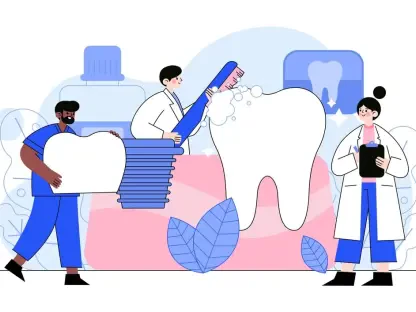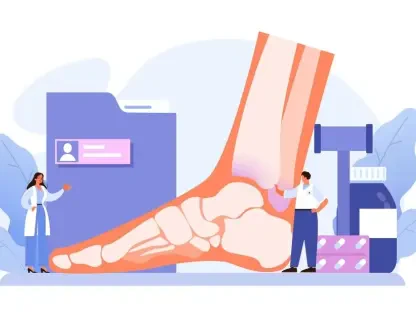Understanding Kern County’s Healthcare Landscape
Kern County, located in California’s Central Valley, faces a dire healthcare crisis marked by a severe shortage of medical professionals and a high burden of chronic illnesses among its population, making access to care a significant challenge. With a provider-to-patient ratio significantly below the state average, many residents struggle to access timely care, exacerbating conditions like diabetes and heart disease that are prevalent in the region. This scarcity of healthcare workers creates a vicious cycle, where limited services lead to poorer health outcomes, further straining the system.
At the heart of the county’s healthcare framework stands Kern Medical, a critical safety net hospital that serves the most vulnerable populations, including the uninsured and underinsured. Operating one of the busiest trauma centers in California, it handles an immense volume of emergency cases while grappling with staffing shortages that threaten its capacity to deliver consistent care. Its role as a lifeline for the underserved underscores the urgent need for innovative solutions to bolster its resources.
Beyond the hospital’s challenges, broader public health issues compound the crisis, with limited access to primary care driving residents to rely on emergency services for routine needs. Rural areas within the county face even greater barriers, as geographic isolation and transportation issues hinder timely medical attention. These systemic gaps highlight a pressing reality: without intervention, the region’s healthcare disparities will continue to widen, demanding immediate and collaborative action.
The Power of Strategic Partnerships
A Collaborative Model for Local Solutions
A transformative partnership among Western University of Health Sciences (WesternU), Kern Medical, California State University, Bakersfield (CSUB), and Bakersfield College offers a promising approach to addressing the provider shortage in Kern County. This alliance, formalized through a recent summit hosted by Kern Medical, focuses on building a sustainable workforce by training local talent who are deeply connected to the community. The goal is to create a cycle of care where professionals raised in the region return to serve it.
Central to this model is the concept of “home-grown” healthcare workers, an initiative designed to ensure long-term retention of skilled individuals. By fostering education and clinical training within the county, the collaboration leverages local pride and familiarity to keep graduates in area facilities. Data supports this strategy, revealing that 90% of CSUB graduates who enter healthcare roles remain in local institutions, demonstrating the effectiveness of community-rooted programs.
This shared vision extends beyond mere numbers, emphasizing solutions driven by the unique needs and spirit of Kern County. Leaders from each institution stress the importance of collective action, viewing the partnership as a way to empower residents and shape a healthier future. Such alignment of goals positions this effort as a potential blueprint for other underserved regions seeking to address similar challenges through localized collaboration.
Educational Pathways and Opportunities
The partnership has established structured educational tracks, such as the Pre-Medical Pathway Program and the Research Laboratory Technology (RTEC) Pathway, to guide students from Bakersfield College through CSUB and into advanced training at WesternU. These programs create a seamless progression for aspiring healthcare professionals, ensuring they receive comprehensive preparation at each stage. By connecting community college education with university and medical school opportunities, the initiative removes traditional barriers to entry.
A key feature of these pathways is the reservation of seats for local students in competitive medical programs at WesternU’s College of Osteopathic Medicine of the Pacific and other graduate offerings. This provision sends a powerful message that careers in healthcare are attainable for Kern County residents, regardless of socioeconomic background. It transforms distant dreams into tangible goals, fostering hope and ambition among the youth.
The potential impact of these educational routes is substantial, promising to build a steady pipeline of qualified professionals to meet the region’s growing demand. As more students progress through tailored curricula and hands-on training, the county could see a gradual but significant reduction in provider shortages. This long-term strategy prioritizes sustainability, aiming to create a self-reinforcing system where each graduating class strengthens the local healthcare infrastructure.
Challenges in Addressing Healthcare Shortages
Despite the optimism surrounding this partnership, Kern County faces formidable obstacles in tackling its healthcare deficits. Funding constraints pose a major hurdle, as expanding training programs and facilities requires substantial financial investment that is often hard to secure in a region with limited economic resources. Without consistent support, even the most well-designed initiatives risk stalling before they can achieve meaningful impact.
Systemic issues further complicate the situation, with underserved populations struggling to access care due to inadequate resources and infrastructure. The high demand for providers also means that Kern County must compete with larger urban centers that offer more lucrative opportunities, making retention an ongoing battle. These structural challenges underscore the complexity of reversing decades of neglect in rural healthcare systems.
To overcome these barriers, sustained investment from public and private stakeholders is essential, alongside efforts to engage the community in supporting local talent. Strategies like offering incentives for graduates to stay, expanding telemedicine to bridge geographic gaps, and advocating for policy changes to allocate more resources to the region could make a difference. Addressing these challenges requires persistence and adaptability to ensure that promising programs translate into lasting change.
Community Impact and Wellness Initiatives
Innovative projects under the partnership, such as the planned Community Wellness Center in Bakersfield, aim to broaden access to care while serving as a hub for advanced training. This facility will not only provide medical services to residents who might otherwise go without but also offer a space for students and professionals to hone their skills in real-world settings. Its dual purpose reflects a commitment to both immediate relief and future preparedness.
The center’s focus extends beyond treatment, incorporating education and prevention programs to empower the community in managing health proactively. By teaching residents about nutrition, exercise, and disease management, it seeks to reduce the incidence of chronic conditions that burden the system. Such initiatives represent a shift toward holistic care, addressing root causes rather than merely symptoms.
Integrating healthcare training with community-focused wellness efforts holds broader implications for Kern County’s long-term health outcomes. As trainees interact directly with local populations through these programs, they gain a deeper understanding of cultural and social factors influencing care. This synergy between education and outreach fosters a more compassionate and effective workforce, poised to make a meaningful difference in the region’s well-being.
Future Outlook for Kern County’s Healthcare System
Looking ahead, the collaborative efforts among WesternU, Kern Medical, CSUB, and Bakersfield College have the potential to reshape the healthcare landscape of Kern County through persistent innovation and teamwork. By prioritizing localized training, the partnership addresses immediate shortages while laying the groundwork for a resilient system capable of adapting to future needs. This forward-thinking approach could serve as a model for other regions facing similar disparities.
Emerging trends, such as an increased focus on holistic health solutions and community-driven care, suggest a shift in how rural healthcare challenges are tackled. These strategies emphasize not just the quantity of providers but the quality of services, ensuring that residents receive comprehensive support. If successful, Kern County’s model could inspire replication across California and beyond, offering hope to underserved areas everywhere.
Critical factors like student engagement, consistent funding, and the ability to scale programs will determine the long-term success of these initiatives. Monitoring participation rates and securing ongoing financial backing will be vital to expanding the reach of educational pathways and wellness projects. As these elements align, the region stands on the cusp of a healthcare transformation that prioritizes both people and place.
Conclusion and Call to Action
Reflecting on the strides made through this historic partnership, it becomes evident that collaborative efforts have ignited a spark of hope in Kern County’s battle against healthcare disparities. The alignment of educational institutions and medical facilities has set a powerful precedent for addressing provider shortages through local talent development. Community wellness projects have begun to redefine access to care, proving that innovation can thrive even in resource-scarce environments.
Moving forward, stakeholders must prioritize securing robust funding to sustain and expand these programs, ensuring they reach every corner of the county. Encouraging greater community involvement through volunteer opportunities and awareness campaigns could amplify the impact of wellness initiatives. By building on this momentum, Kern County has the chance to not only heal its own wounds but also inspire a national movement toward equitable healthcare through localized solutions.









